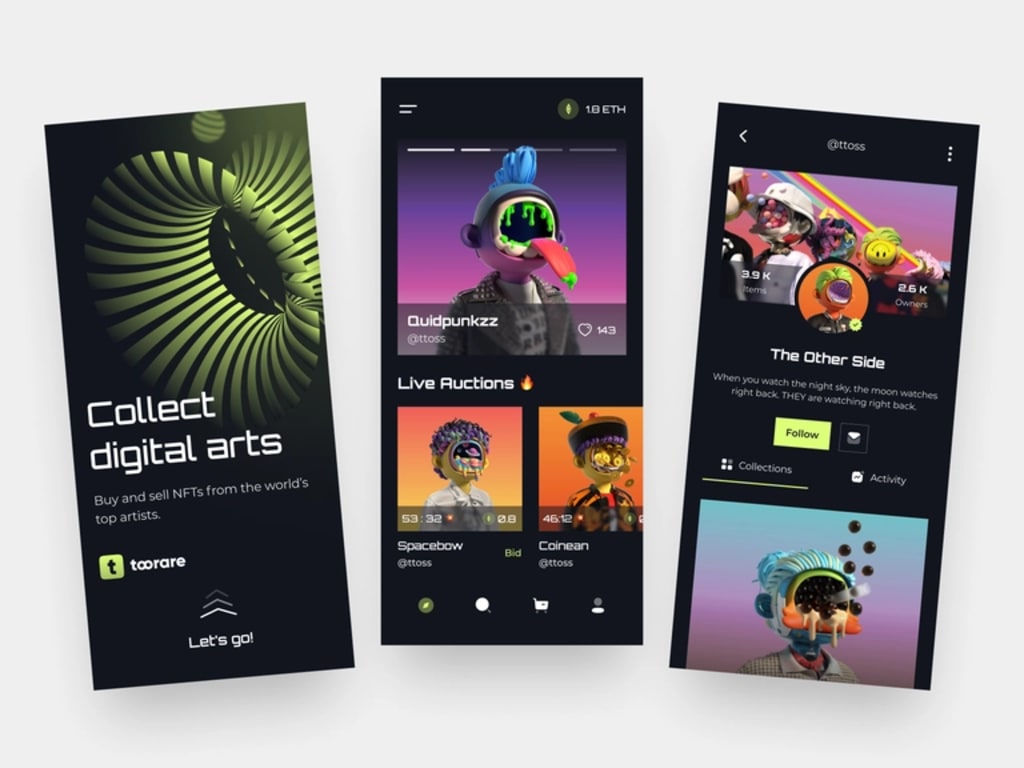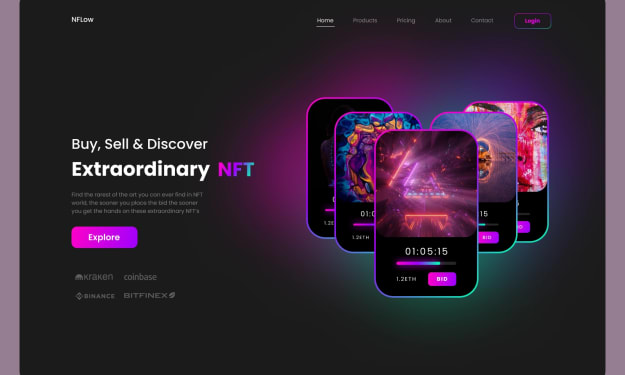NFT Marketplace for Social Media Influencers: From Concept to Development
NFT marketplace for social media influencers offers a new and innovative way for influencers to monetize their digital content and build deeper relationships with their followers.

NFT marketplace for social media influencers is a platform where influencers can create, list, and sell unique digital assets as NFTs to their followers. This marketplace provides a way for influencers to monetize their digital content in a way that was previously not possible. By creating and selling NFTs, influencers can generate income and reward their most loyal followers.
The NFT marketplace allows influencers to convert their digital content, such as images, videos, or other media, into a one-of-a-kind asset that can be bought, sold, and traded on a blockchain platform. The marketplace can be a standalone platform or integrated into an existing social media platform.
The marketplace provides a way for followers to support their favorite influencers by buying and collecting their NFTs. By purchasing an NFT, followers can own a piece of the influencer's digital content, which can be a unique and valuable asset that can appreciate in value over time.
In addition to buying and selling NFTs, the marketplace can also offer features such as membership NFTs, which provide exclusive access to content or events, and a secondary market where buyers can trade NFTs for a potentially higher value.
How NFT Marketplace for Social Media Influencers Works?
An NFT marketplace for social media influencers works by allowing them to monetize their digital content, such as images or videos, by creating and selling NFTs, or non-fungible tokens, to their followers. NFTs are unique, one-of-a-kind digital assets that can be bought, sold, and traded on a blockchain platform.
Here's how an NFT marketplace for social media influencers typically works:
Influencers create and upload digital content: Social media influencers create digital content such as images, videos, or other media that they want to monetize.
Convert digital content into NFTs: The influencers convert their digital content into NFTs using a smart contract that defines the unique properties and characteristics of the NFT, such as its name, description, image, and other attributes.
List NFTs on the marketplace: The NFTs are listed for sale on the NFT marketplace, along with details such as the price and the number of tokens available.
Followers buy NFTs: The influencers' followers can buy the NFTs using cryptocurrencies like Ethereum or Bitcoin. Once the NFTs are purchased, they are transferred to the buyer's wallet.
Membership NFTs: In some cases, the influencers may offer membership NFTs that give the buyer access to exclusive content, events, or other perks. These NFTs can be sold at a higher price than regular NFTs and are often limited in quantity.
Secondary market: Once the NFTs are sold, they can be traded on a secondary market where buyers can resell them for a higher price or hold onto them as a long-term investment.
How to Create an NFT Marketplace for Social Media Influencers?
Creating an NFT marketplace for social media influencers can be a great way to monetize their content and engage with their followers. In this article, we will discuss the technical steps to create an NFT marketplace for social media influencers.
Step 1: Choose the Blockchain Platform
The first step in creating an NFT marketplace for social media influencers is to choose the blockchain platform. Ethereum is the most popular blockchain platform for creating NFTs. However, other blockchain platforms like Binance Smart Chain, Polkadot, and Flow also support NFT creation.
Step 2: Choose the NFT Standard
The next step is to choose the NFT standard. The ERC-721 and ERC-1155 are the most popular NFT standards for creating NFTs on the Ethereum blockchain. The ERC-721 standard is used for creating unique, one-of-a-kind NFTs, while the ERC-1155 standard is used for creating semi-fungible NFTs.
Step 3: Set Up the Smart Contract
Once you have chosen the blockchain platform and the NFT standard, the next step is to set up the smart contract. A smart contract is a self-executing contract with the terms of the agreement between the buyer and the seller directly written into lines of code.
The smart contract will include the rules of the marketplace, including the listing fee, transaction fee, and any other fees. It will also include the details of the NFT, such as the name, description, image, and the number of tokens that will be created.
Step 4: Develop the Front-end
The front-end is the user interface that the influencers and their followers will use to interact with the NFT marketplace. The front-end should be user-friendly and should make it easy for the influencers to list their NFTs and for their followers to buy them.
The front-end should also include a wallet that allows the influencers and their followers to store their NFTs. This can be a web wallet, a mobile wallet, or a hardware wallet.
Step 5: Integrate Payment Gateway
The next step is to integrate a payment gateway. This will allow the influencers and their followers to buy and sell NFTs using cryptocurrencies like Ethereum or Bitcoin.
The payment gateway should be secure and easy to use. It should also support multiple cryptocurrencies to make it easy for the influencers and their followers to use the platform.
Step 6: Implement Membership NFTs
To incentivize their followers to buy NFTs, the influencers can implement membership NFTs. These NFTs will give the followers access to exclusive content, events, and other perks.
The membership NFTs should be created using the same NFT standard as the other NFTs on the platform. They should also be linked to the smart contract so that the perks associated with the membership NFTs can be automatically unlocked.
Step 7: Launch the NFT Marketplace
The final step is to launch the NFT marketplace. This can be done by deploying the smart contract to the chosen blockchain platform and making the front-end accessible to the influencers and their followers.
Before launching the marketplace, it is important to test it thoroughly to ensure that it is secure and user-friendly.
In conclusion, Developing an NFT marketplace for influencers can be a great way to monetize their content and engage with their followers. By following these technical steps, you can create a secure and user-friendly NFT marketplace that will benefit both the influencers and their followers.
About the Creator
Enjoyed the story? Support the Creator.
Subscribe for free to receive all their stories in your feed. You could also pledge your support or give them a one-off tip, letting them know you appreciate their work.






Comments
There are no comments for this story
Be the first to respond and start the conversation.